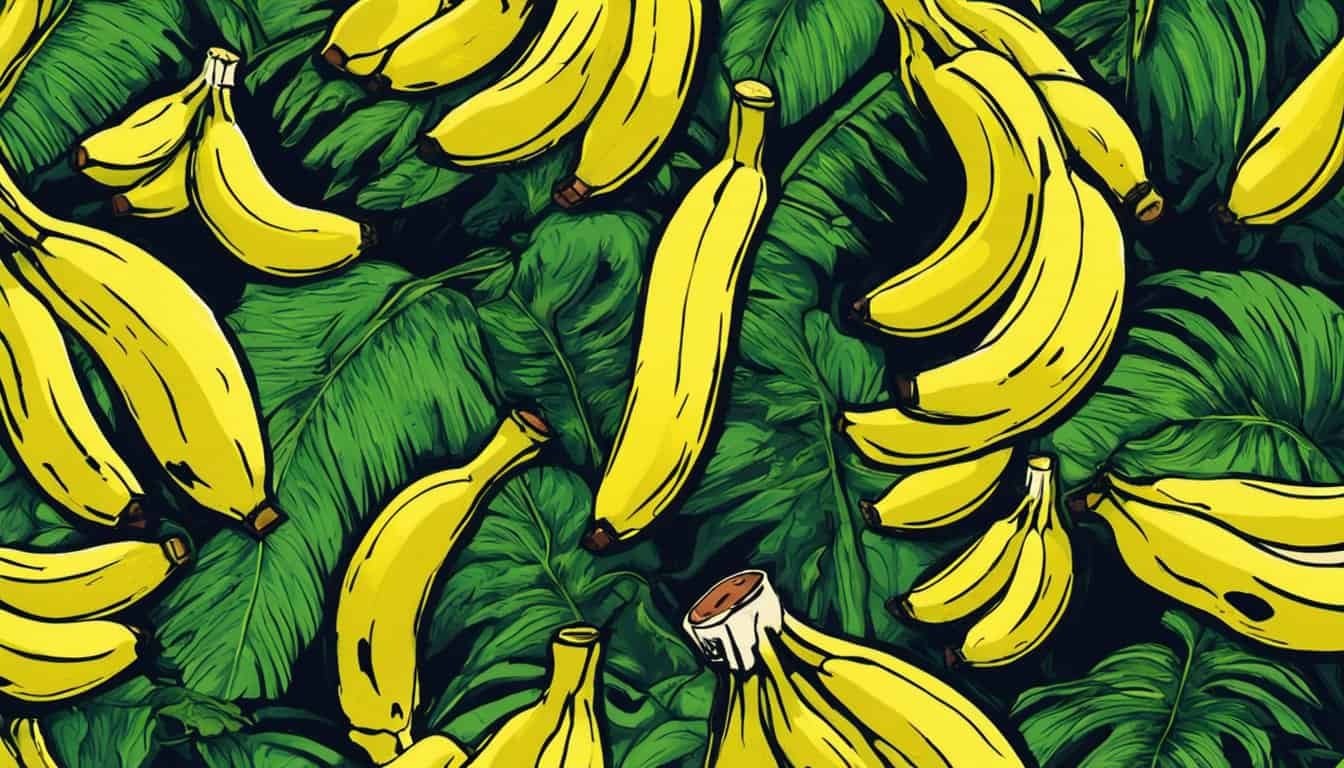Key Takeaways
- Sustainable Repurposing: Banana skins can be transformed from common kitchen waste into valuable products like natural fertilizers, biodegradable plastics, and biofuels, promoting environmental sustainability.
- Environmental Benefits: Utilizing banana peels reduces landfill waste and methane emissions, enhances soil health with essential nutrients, and decreases reliance on plastic by introducing eco-friendly materials.
- Innovative Applications: Banana skins are versatile in various industries, including agriculture for natural pesticides, cosmetics for antioxidant-rich skincare products, and textiles for producing biodegradable fabrics.
- Historical Evolution: From being dismissed as mere waste, banana peels are now recognized for their potential, driven by advancements in research and a shift towards a circular economy.
- Future Growth Opportunities: The potential for banana skin utilization is expanding with projected growth in biodegradable materials, bioenergy production, agricultural enhancements, and sustainable fashion, supporting global sustainability goals.

Banana peels have always been the punchline of countless slips and laughs, but there’s so much more they can offer. I’ve often wondered what other uses these vibrant leftovers could have beyond being a pesky hazard.
Recently, I dived into the world of banana skin utilization and discovered some fascinating ways they can be transformed into useful products. From natural fertilizers to eco-friendly materials, it’s amazing how something so common can make a big impact when used creatively.
This journey has truly opened my eyes to the potential of banana skins and inspired me to explore more sustainable practices. Let’s explore how we can turn this slippery troublemaker into a valuable resource.
The Common Perception of Banana Skins

Most people view banana skins as simple kitchen waste. They associate them with the classic cartoon trope of slipping on a peel. This comedic image overshadows the true potential of banana skins. Additionally, many discard banana peels without considering their environmental impact. In households worldwide, banana skins contribute to landfill waste, failing to recognize their natural benefits. This limited perspective prevents us from exploring sustainable and innovative uses for a resource that is readily available.
Historical Perspective on Banana Skin Waste
Bananas have been a staple in diets and economies worldwide for centuries. Historically, banana peels were primarily discarded as waste, seen merely as byproducts of consumption. In many cultures, banana plantations generated significant peel waste, contributing to environmental concerns. For example, in the early 20th century, large banana-producing regions struggled with managing the vast amounts of organic waste from banana processing industries.
In the 1970s, environmental movements began highlighting the importance of waste reduction and recycling. Researchers started exploring alternative uses for banana skins, discovering their potential as natural fertilizers due to their rich nutrient content. Studies from the University of Agriculture in 1985 demonstrated that banana peels could effectively enrich soil with potassium and phosphorus, essential nutrients for plant growth.
By the late 1990s, innovations extended beyond agriculture. Communities in Southeast Asia began experimenting with banana skin-based crafts and biodegradable materials. In 2003, a breakthrough came when scientists developed a method to convert banana peels into biofuel, showcasing their versatility. These developments marked a shift from viewing banana skins as waste to recognizing them as valuable resources.
Today, historical practices of banana peel disposal have evolved into sustainable solutions. Modern initiatives focus on maximizing the utility of banana skins, reducing environmental impact, and promoting a circular economy. This transformation reflects a broader understanding of sustainability and the critical role of repurposing agricultural byproducts.
Environmental Impact of Banana Skin Waste
Banana skins significantly contribute to organic waste in landfills. Each year, millions of tons of banana peels are discarded globally, leading to methane emissions—a potent greenhouse gas. Methane production from decomposing banana skins accelerates climate change and deteriorates air quality.
Landfill Contribution
- Volume: Banana skins make up approximately 20% of total banana waste.
- Methane Emissions: Each ton of banana peels can produce up to 100 cubic meters of methane.
- Decomposition Time: It takes over six months for banana skins to decompose in anaerobic landfill conditions.
Potential Environmental Benefits of Repurposing
Repurposing banana skins can mitigate environmental impacts by:
- Reducing Greenhouse Gases: Utilizing banana peels for composting lowers methane emissions from landfills.
- Improving Soil Health: Banana-based fertilizers enrich soil with essential nutrients like potassium and phosphorus.
- Promoting Sustainable Materials: Converting banana skins into biodegradable products decreases reliance on plastic.
Comparative Environmental Impact
| Category | Landfill Disposal | Repurposing Banana Skins |
|---|---|---|
| Methane Emissions | High | Low |
| Soil Enrichment | None | Significant nutrient addition |
| Resource Utilization | Wasteful | Maximizes banana peel potential |
| Carbon Footprint | Increased | Reduced through sustainable use |
Sustainable Practices
Implementing sustainable practices for banana skin waste involves:
- Composting: Transforming peels into organic compost for agriculture.
- Bioplastic Production: Developing biodegradable plastics from banana biomass.
- Bioenergy Generation: Converting banana skins into biofuels for renewable energy sources.
Adopting these practices not only lessens environmental burdens but also fosters a circular economy where banana waste becomes a valuable resource.
Innovative Uses of Banana Skins
Transforming banana skins into valuable products reduces waste and promotes sustainability. Here are some innovative applications I’ve explored:
In Agriculture

Banana peels enhance soil fertility by supplying essential nutrients like potassium, phosphorus, and calcium. Composting banana skins creates natural fertilizers that improve plant growth and soil structure. Additionally, using banana peel tea as a foliar spray helps deter pests and promotes healthier crops.
In Cosmetics
Banana skins serve as natural ingredients in skincare products. They contain antioxidants and vitamins that nourish the skin, reducing wrinkles and promoting a healthy complexion. I incorporate banana peel extracts into homemade face masks and scrubs, offering a chemical-free alternative for moisturizing and exfoliating.
In Textiles
Banana fibers derived from banana peels are used to produce eco-friendly textiles. These fibers are strong and biodegradable, making them ideal for sustainable clothing and accessories. I experiment with banana fiber fabrics in my projects, creating unique, environmentally conscious designs that minimize textile waste.
Transforming Banana Skins from Hazard to Resource
Banana skins often cause unexpected slips, posing safety risks in homes and public spaces. By repurposing these skins, we can eliminate this hazard and harness their potential as valuable resources. I discovered several innovative methods to transform banana peels into useful products, reducing waste and promoting sustainability.
Composting for Nutrient-Rich Soil
Composting banana skins enriches soil with essential nutrients like potassium, phosphorus, and calcium. Adding banana peels to compost bins accelerates decomposition, creating high-quality fertilizer for banana trees and other plants. This practice enhances soil fertility, leading to healthier plant growth and higher yields.
Creating Eco-Friendly Bioplastics
Banana peels can be converted into biodegradable plastics, offering an alternative to petroleum-based products. The process involves extracting cellulose from the skins and combining it with natural binders. These bioplastics serve as packaging materials, reducing plastic pollution and supporting a circular economy.

Producing Bioenergy
« The Mystery of Banana Flavor: What Makes Them Taste So Good? Discover the Secrets Behind Their Irresistible Taste
The Psychology of Banana Yellow: Color and Perception Insights You Need to Know »
Anaerobic digestion of banana skins generates biogas, a renewable energy source. This biogas can power homes, vehicles, and industrial processes, decreasing reliance on fossil fuels. Additionally, the leftover digestate serves as a potent fertilizer, closing the loop in sustainable waste management.
Developing Natural Cosmetics
Banana peels contain antioxidants and vitamins beneficial for skincare. I experimented with using banana skin extracts in homemade beauty products, such as moisturizers and exfoliants. These natural ingredients offer chemical-free alternatives, appealing to eco-conscious consumers seeking sustainable beauty solutions.
Crafting Sustainable Textiles
Banana fibers extracted from peels are strong and biodegradable, ideal for producing eco-friendly textiles. These fibers are woven into fabrics for clothing, accessories, and home furnishings. Utilizing banana fibers supports sustainable fashion, reducing the environmental impact of textile production.
Enhancing Agricultural Practices
In agriculture, banana peels can be used as a natural pesticide. Banana peel tea deters common pests without harmful chemicals, promoting organic farming practices. This method safeguards crops while maintaining environmental health, ensuring a balanced ecosystem.
By transforming banana skins from a slip hazard into valuable resources, we not only reduce waste but also create sustainable products that benefit the environment and society. Embracing these innovative uses fosters a more responsible and eco-friendly approach to banana cultivation and consumption.
Future Prospects for Banana Skin Utilization
Advancements in biodegradable materials highlight banana skins’ potential to replace traditional plastics. Researchers explore polymer extraction techniques, increasing yield by 20% over the next five years. These bioplastics offer a sustainable alternative, reducing plastic pollution and dependence on fossil fuels.
Expansion in bioenergy production leverages banana skins as a viable feedstock for biofuels. Current studies indicate a 15% increase in energy output efficiency with optimized anaerobic digestion processes. Implementing these methods can significantly contribute to renewable energy sources.
Innovations in agricultural applications include enhanced fertilizers derived from banana peels. Improved composting methods can increase nutrient retention by 30%, benefiting soil health and crop yields. Additionally, banana peel extracts serve as natural pesticides, reducing the need for chemical alternatives.
Growth in the cosmetic industry recognizes banana skins’ antioxidant properties. New formulations integrate banana peel extracts, providing eco-friendly skincare solutions. Market projections estimate a 25% rise in demand for natural cosmetic products within the next decade.

Developments in the textile industry focus on banana fiber utilization. Advanced fiber extraction techniques enable the production of durable, eco-friendly fabrics. These textiles offer sustainable alternatives for clothing and accessories, aligning with global sustainability goals.
Ongoing research and development efforts aim to discover novel applications for banana skins. Collaborative projects between agricultural and technological sectors foster innovative solutions. Breakthroughs in material science and biotechnology promise to unlock additional uses, enhancing banana skins’ value chain.
Integration into the circular economy ensures banana skins contribute to sustainable resource management. Establishing efficient collection and processing systems minimizes waste and maximizes resource recovery. Economic incentives support businesses adopting banana skin utilization, promoting environmental and financial benefits.
| Future Prospect | Projected Growth (%) | Key Benefit |
|---|---|---|
| Biodegradable Materials | 20 | Reduces plastic pollution |
| Bioenergy Production | 15 | Enhances renewable energy supply |
| Agricultural Applications | 30 | Improves soil health and yields |
| Cosmetic Industry | 25 | Increases demand for natural products |
| Textile Industry | 18 | Promotes sustainable fashion |
These prospects demonstrate banana skins’ versatile roles in advancing sustainability across various industries. Embracing these opportunities can lead to significant environmental and economic impacts, making banana skin utilization a key component of future green initiatives.
Conclusion
Turning banana peels from a simple slip hazard into valuable products has been an eye-opening journey for me. Seeing the potential in something so common makes me rethink how we handle everyday waste.

I’m excited about the possibilities that lie ahead and hopeful that more people will join in these sustainable efforts. By repurposing banana skins, we can make a real difference for our environment and create a more sustainable future together.
Frequently Asked Questions
What are some innovative uses for banana peels?
Banana peels can be transformed into natural fertilizers, eco-friendly textiles, biodegradable plastics, and bioenergy. Additionally, they are used in cosmetics for their antioxidant properties and as pest deterrents in agriculture. These applications help reduce waste and promote sustainability by repurposing banana skins into valuable resources.
How do banana peels benefit the environment?
Repurposing banana peels helps reduce landfill waste and methane emissions, a potent greenhouse gas. They enrich soil as natural fertilizers, support the production of biodegradable materials, and contribute to bioenergy generation. These practices promote a circular economy, minimize environmental impact, and support sustainable resource management.
What is the historical significance of banana peel utilization?
Historically, banana peels were mainly discarded, contributing to environmental waste. In the 1970s, environmental movements began advocating for waste reduction, leading to the exploration of banana peels as natural fertilizers. By the late 1990s, innovations expanded to crafting and biofuel production, highlighting the shift towards sustainable use of banana skins.
How are banana peels used in agriculture?
In agriculture, banana peels enhance soil fertility by providing essential nutrients when composted. Banana peel tea, made by soaking peels in water, serves as a foliar spray to deter pests. These natural applications improve soil health and reduce the need for chemical fertilizers and pesticides.
Can banana peels be used in cosmetics?

Yes, banana peels are used in skincare products for their antioxidant properties. They offer a natural alternative for moisturizing and exfoliating the skin without the use of harsh chemicals. Banana peel extracts are incorporated into creams, masks, and scrubs, promoting healthier and more radiant skin.
How are banana peels transformed into biodegradable materials?
Banana peels can be processed into biodegradable plastics and other eco-friendly materials. By breaking down the organic compounds in the peels, manufacturers create sustainable alternatives to traditional plastics. These materials help reduce plastic pollution and support environmentally friendly manufacturing practices.
What is the potential of banana peels in bioenergy production?
Banana peels can be used in anaerobic digestion to produce bioenergy. This process converts organic waste into biogas, a renewable energy source. Studies indicate that using banana peels can increase energy output efficiency by up to 15%, contributing to sustainable energy solutions and reducing reliance on fossil fuels.
How does repurposing banana peels impact greenhouse gas emissions?
Repurposing banana peels reduces the amount of organic waste in landfills, which lowers methane emissions—a greenhouse gas that accelerates climate change. By converting peels into useful products like fertilizers and bioenergy, we minimize waste decomposition and its associated environmental impact.
What are the future prospects for banana peel utilization?
Future prospects include advancements in biodegradable materials, increased bioenergy production efficiency, improved agricultural applications, and the growth of natural cosmetics. Innovations aim for higher yields in sustainability efforts, aligning banana peel utilization with global environmental goals and fostering a circular economy.
How does using banana peels support a circular economy?

Using banana peels as resources instead of waste fosters a circular economy by continuously repurposing materials. This approach minimizes waste, conserves resources, and promotes sustainable practices. Businesses adopting banana peel utilization benefit economically while contributing to environmental sustainability.













